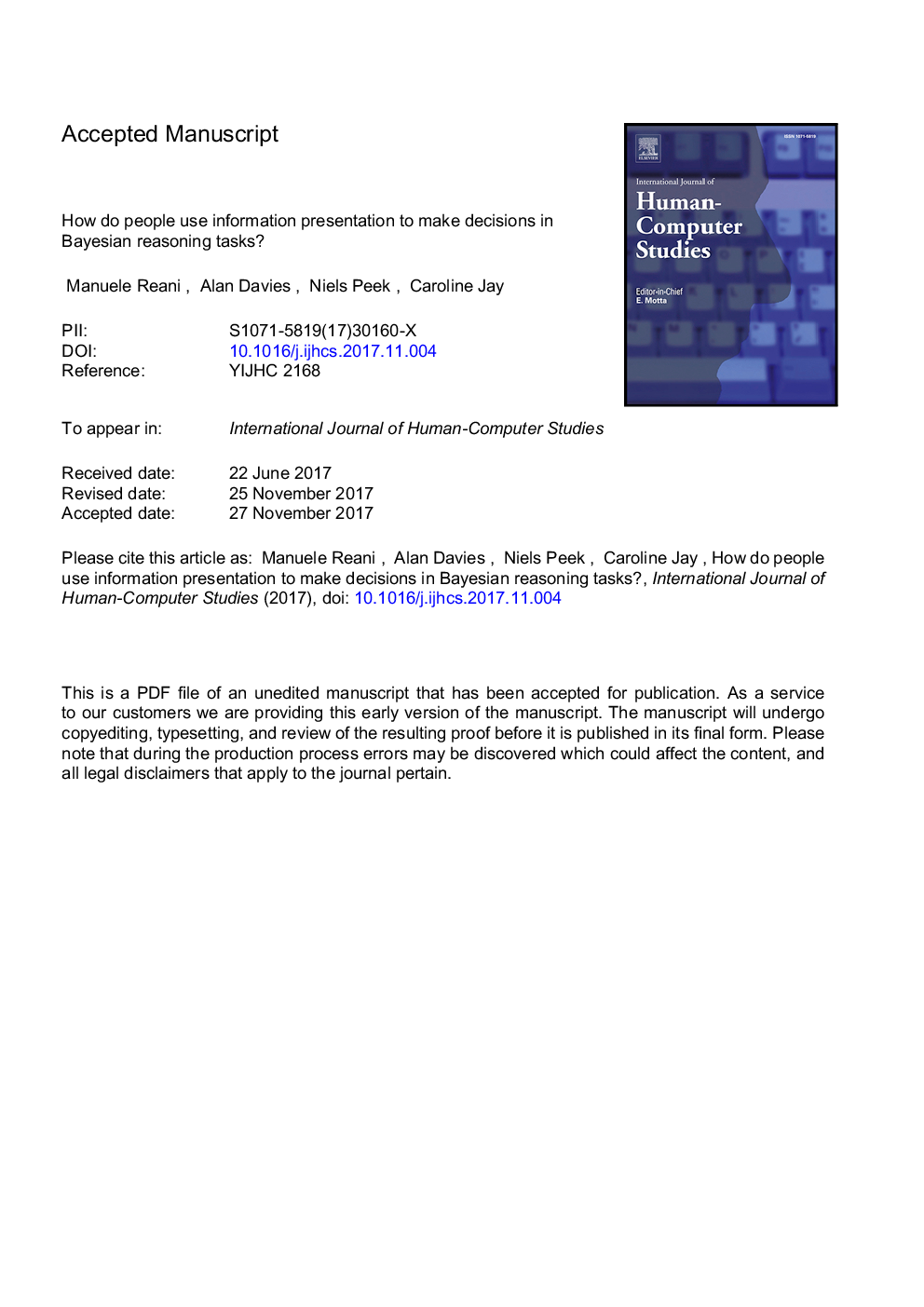| Article ID | Journal | Published Year | Pages | File Type |
|---|---|---|---|---|
| 6860990 | International Journal of Human-Computer Studies | 2018 | 46 Pages |
Abstract
Humans often struggle to understand conditional probability, which underlies the interpretation of many important procedures including medical tests. Visualisation has proved effective in communicating risk in healthcare settings, but its role in facilitating Bayesian reasoning is complex, with contradictory evidence as to its utility, and a lack of understanding as to how it is best applied. This paper evaluates both established and novel techniques for visualising conditional probabilities, examining not just whether they facilitate understanding, but how people use the way the information is presented to interpret the data. We report a controlled study comparing different visualisations of a well-known Bayesian problem, the mammography problem, to its textual description. We use eye tracking, coupled with a novel technique to measure the reasoning process (which we term the utilisation metric), alongside measures of efficiency, effectiveness and satisfaction, to reveal cognitive processes underpinning human-graph understanding. The results demonstrate that the rarity of an event strongly affects how far someone's estimation deviates from the true value of the risk, with rare events resulting in a larger deviation than common events. The results also show that the way in which the data is presented affects both speed and accuracy of interpretation, and that people have preferences that cannot be explained by performance data alone. Whilst Venn diagrams appear to be equal to tree diagrams in terms of task performance, people find the latter easier to interpret. Icon arrays, which are commonly used for presenting risk data, are perceived to be particularly poor at conveying information about conditional probabilities.
Keywords
Related Topics
Physical Sciences and Engineering
Computer Science
Artificial Intelligence
Authors
Manuele Reani, Alan Davies, Niels Peek, Caroline Jay,
